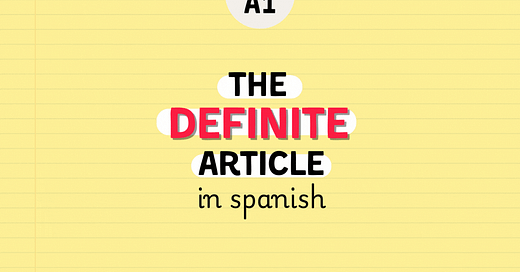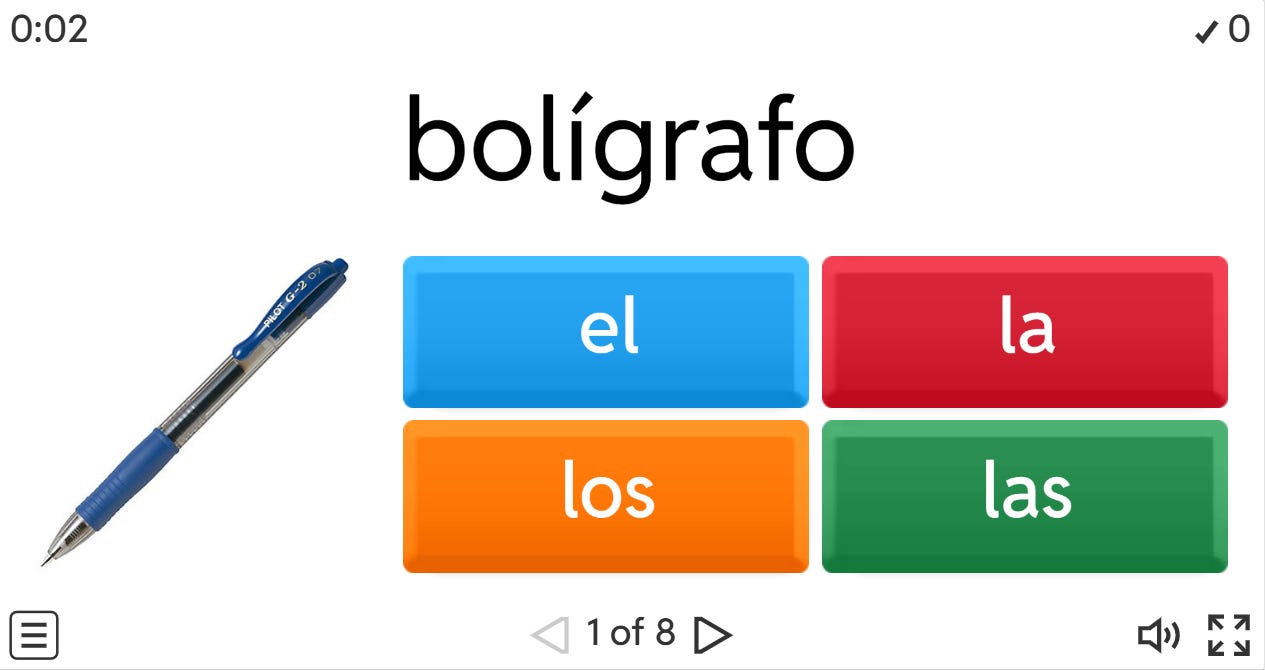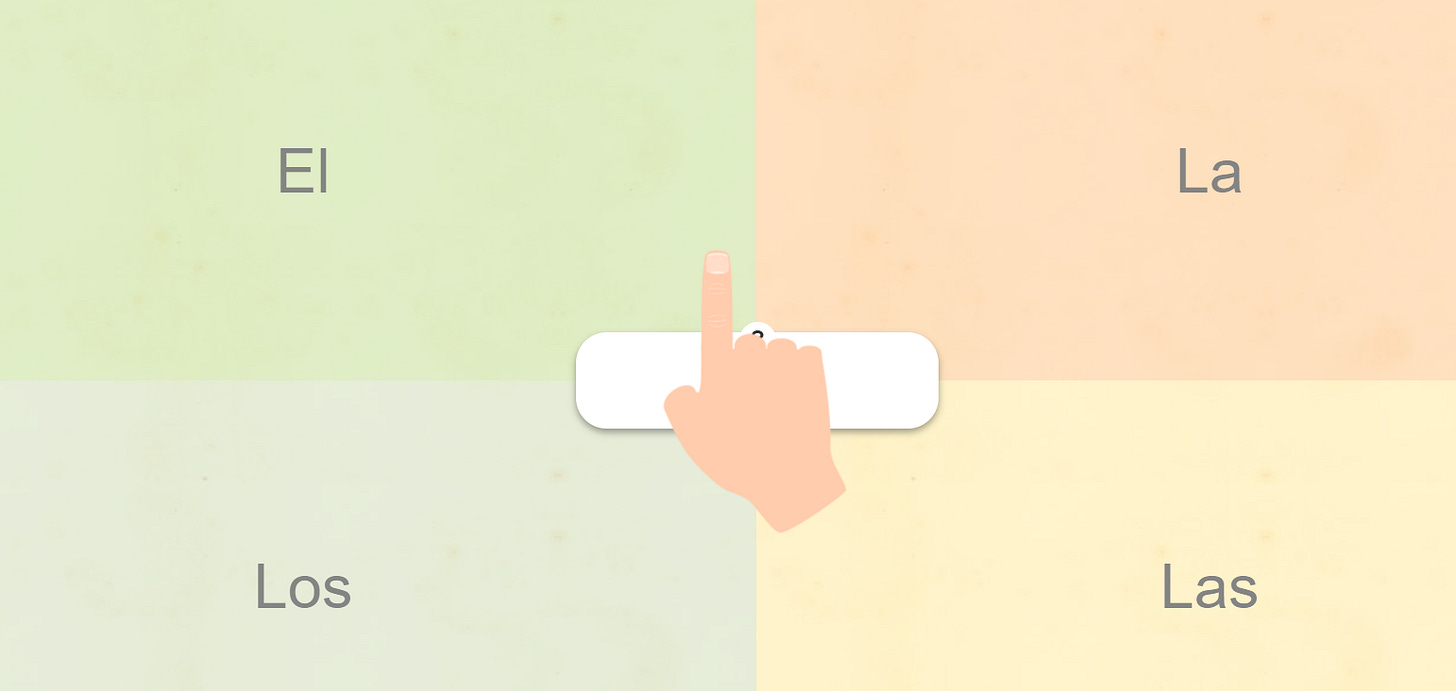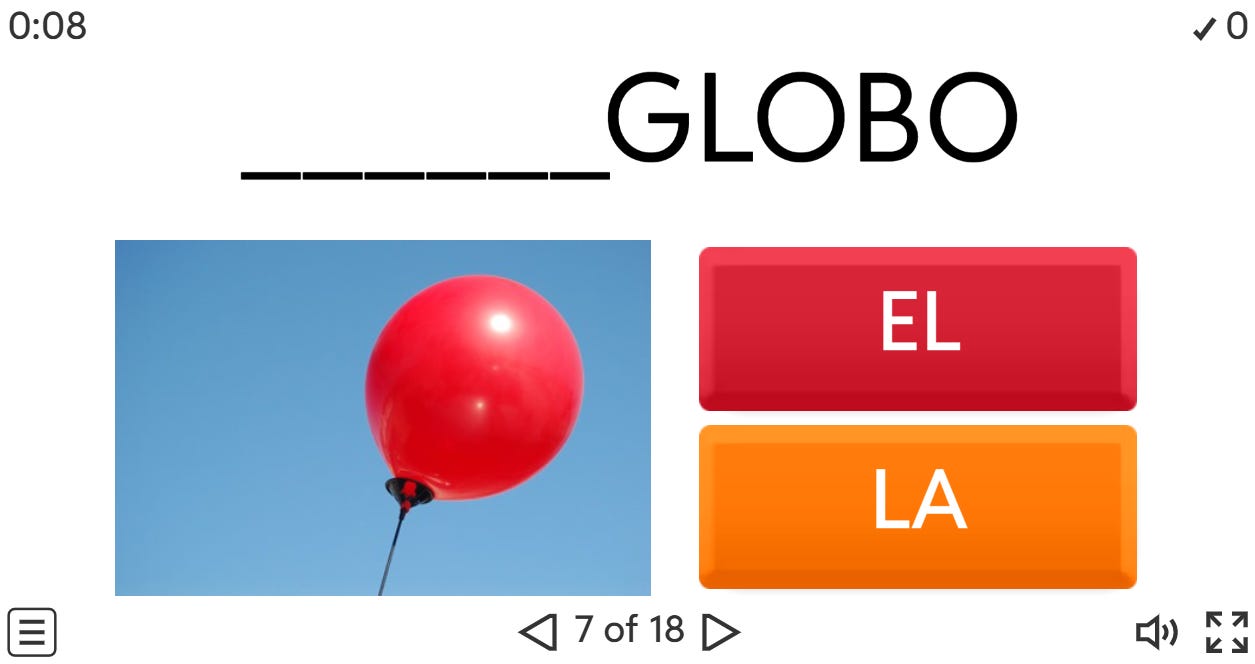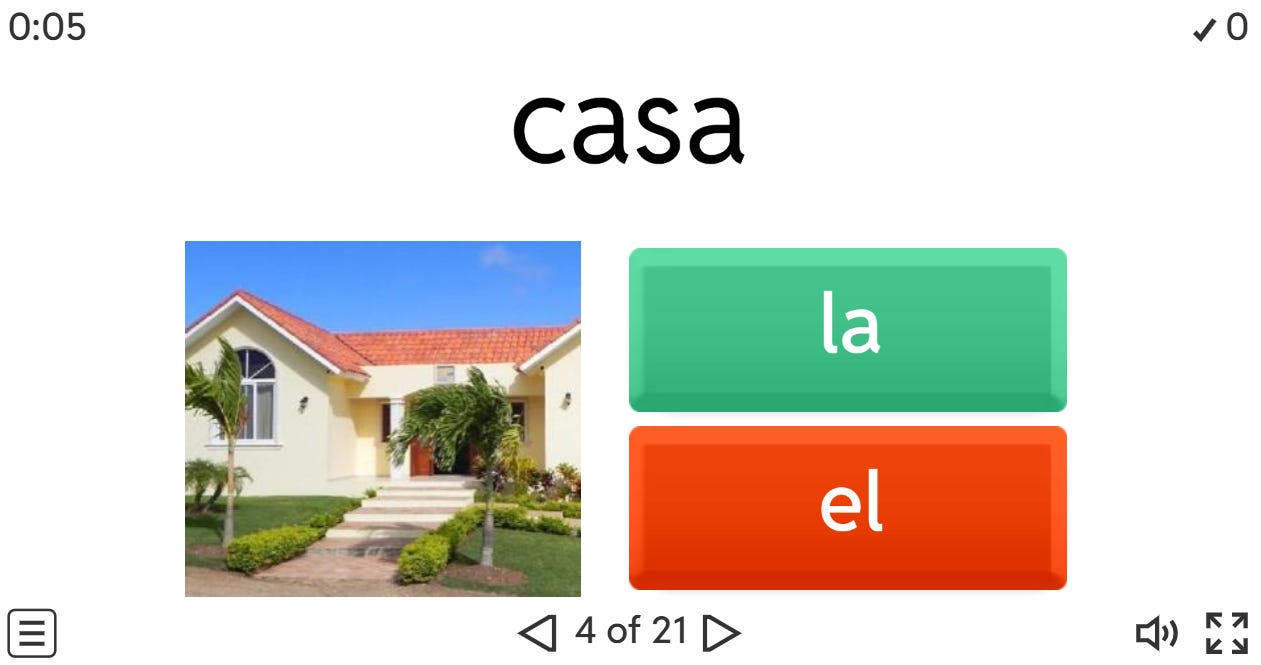The Definite Article in Spanish
What is the Definite Article?
In Spanish, definite articles (artículos definidos) are used to talk about something specific or known. They are like "the" in English!
🔍 The Four Forms:
Spanish has four definite articles:
el (masculine, singular) - "the"
la (feminine, singular) - "the"
los (masculine, plural) - "the"
las (feminine, plural) - "the"
When and how to use them?
1. Referring to Specific Things
Just like in English, use definite articles when talking about something specific or previously mentioned.
¿Dónde está el libro que compraste? (Where is the book you bought?)
La niña que vimos ayer es mi prima. (The girl we saw yesterday is my cousin.)
Exception: If the noun is abstract or general, Spanish may still use the article where English doesn’t.
El amor es hermoso. (Love is beautiful.)
2. General Categories (Unlike English)
In Spanish, definite articles are used for general statements about nouns, whereas English omits them.
Los perros son leales. (Dogs are loyal.)
Me encanta el chocolate. (I love chocolate.)
Compare:
English: "I drink coffee every morning."
Spanish: Tomo el café todas las mañanas.
3. With Days, Dates, and Times
Days of the Week
Use el for a single day:
La reunión es el lunes. (The meeting is on Monday.)
Use los for recurring events:
Voy al gimnasio los martes. (I go to the gym on Tuesdays.)
Dates
Always include the article:
Hoy es el 15 de junio. (Today is June 15th.)
Telling Time
Son las dos de la tarde. (It’s two in the afternoon.)
4. With Proper Names & Titles
Spanish often uses articles before titles and names, unlike English.
El señor González llegó tarde. (Mr. González arrived late.)
La doctora Rivera es muy amable. (Dr. Rivera is very kind.)
Exception: When directly addressing someone, drop the article.
Buenos días, señor López. (Good morning, Mr. López.)
5. Feminine Nouns Starting with Stressed A-/Ha-
If a feminine noun starts with a stressed a- or ha-, it uses el (but remains feminine in meaning).
el agua (the water) → el agua fría (the cold water)
el águila (the eagle) → el águila blanca (the white eagle)
Why? To avoid the awkward "la agua" sound.
6. Body Parts & Clothing (Replacing Possessives)
Instead of saying "my head", Spanish often uses la cabeza with a reflexive verb.
Me duele la cabeza. (My head hurts.)
Se puso los zapatos. (He put on his shoes.)
7. Musical Instruments & Sports
Tocar el piano. (Play the piano.)
Jugar al fútbol. (Play soccer.)
8. Academic Subjects
Me gusta la historia. (I like history.)
Odio las matemáticas. (I hate math.)
9. Fixed Phrases (Ir a, Estar en, Venir de)
Voy al cine. (I’m going to the movies.)
Estoy en la escuela. (I’m at school.)
Vengo del trabajo. (I’m coming from work.)
When NOT to Use Definite Articles
After ser (professions/nationalities)
Soy médico. (I’m a doctor.)
With most countries
Vivo en España. (Not ~~la España~~)
Direct address
Hola, profesora. (Hi, teacher.)
Choose the correct definite article
Click here to practice
Classify the word with the correct article
Click here to practice
Choose the correct definite article
Click here to practice
Choose the correct definite article
Click here to practice
🚀 Want to Learn More?
📅 Book a 1-on-1 Spanish Lesson with me! 👉 Click here to schedule!


